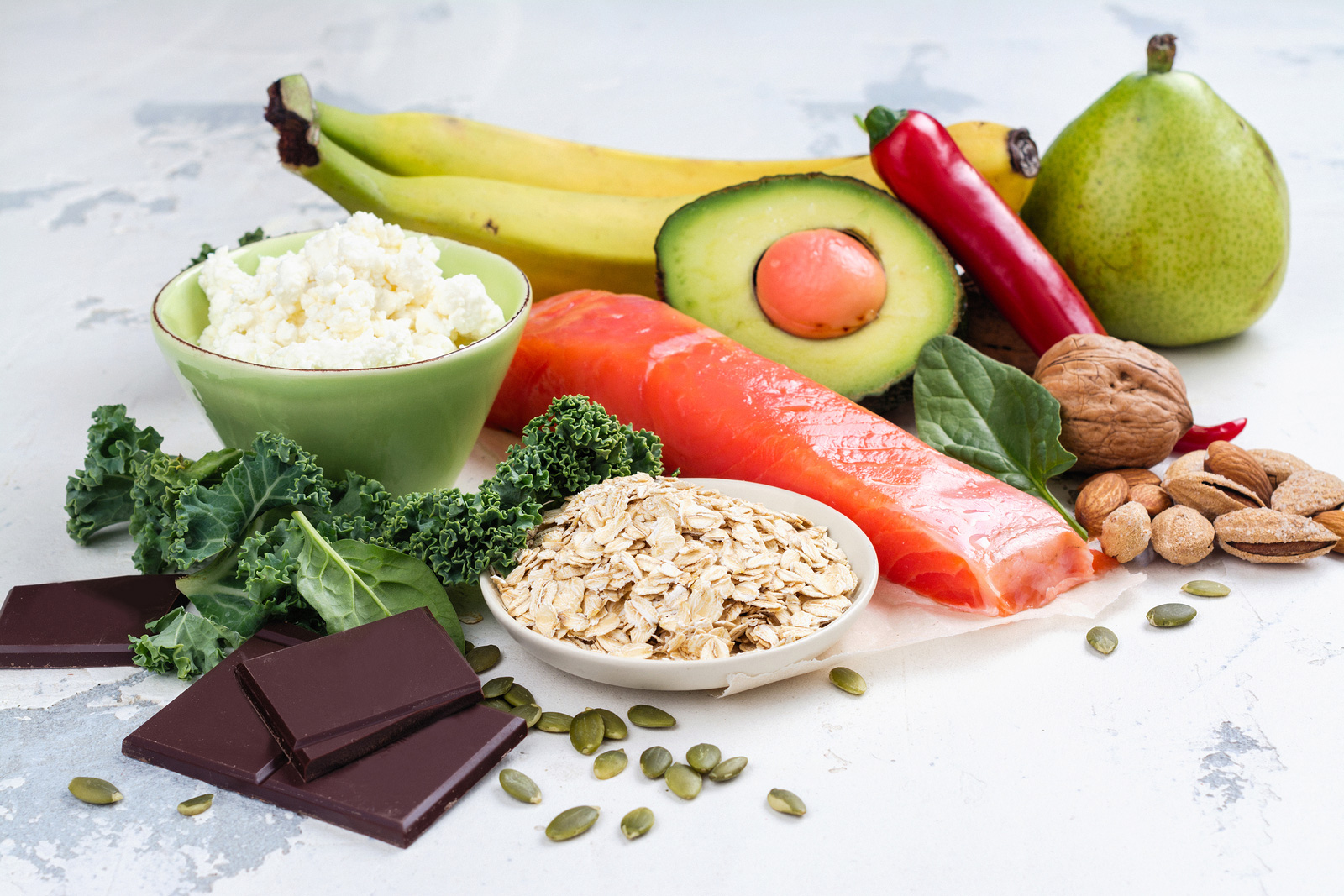Insulin resistance is so pervasive today that I evaluate nearly every woman who comes to see me at the Women to Women clinic to determine her level of risk. Most are taken aback when they learn they either already have the condition or are well on their way to developing it. Experts estimate that 25% of all Americans suffer from insulin resistance. I believe the percentage is much higher among perimenopausal women.
The health effects of insulin resistance — also called Syndrome X — are dramatic. Besides leading directly to diabetes, it’s been implicated in heart disease, breast cancer, Alzheimer’s, polycystic ovarian syndrome (PCOS) and many more diseases. It also often accompanies, and contributes to, related problems of hormonal imbalance such as adrenal fatigue.
Because insulin is one of the “major” hormones, it’s also impossible for your body to balance its “minor” hormones (estrogen, progesterone and testosterone among them) until your insulin metabolism is balanced first. To put it simply, if you have hot flashes and you are insulin resistant, it’s going to be nearly impossible to cure the hot flashes without first healing the insulin resistance.
The good news is that you can heal insulin resistance. This has been a primary focus of my practice for over a decade, and my approach has been quite successful. Let’s explore my methods and how they might help you.
Why All the Concern About Insulin Resistance?
Over 80 million Americans suffer from insulin resistance, and it appears to sit at the center of a web of related health problems. Women who are insulin resistant are at much greater risk of obesity, diabetes, hypertension (high blood pressure), heart disease, high cholesterol, breast cancer and polycystic ovarian syndrome (PCOS). There is some evidence that insulin resistance may contribute to endometrial cancer. It’s also been implicated in Alzheimer’s disease.
Insulin resistance often accompanies the most common complaints I hear from my patients — fatigue and weight gain. As women approach menopause, they become increasingly intolerant of carbohydrates and find it easier to gain weight, especially around their waists. Afternoon blahs, sugar crashes and carbohydrate cravings may all be early symptoms of insulin sensitivity.
Insulin Sensitivity – The Way It Should Work
All of the food we eat – fats, proteins and carbohydrates — is broken down during digestion into proteins, micronutrients and glucose. The body uses the proteins and nutrients in cellular metabolism, immune function, and cell replacement. The body uses glucose as its basic fuel, which is carried by the bloodstream to individual cells.
Our demand for fuel varies from moment to moment, but the brain needs our blood sugar level to remain stable. So getting the cells the energy they need without changing that level is a critical function — and that’s the role that insulin plays. Insulin signals the cells to absorb glucose from the bloodstream. The body monitors what we’ve digested, blood sugar levels, and cell demands then releases insulin in just the right amounts. That’s why a healthy body is described as “insulin sensitive.”
How Insulin Resistance Develops
Our metabolism evolved eons ago, when our diet included fewer and more complex carbohydrates. Today, most calories in an average diet come in the form of carbohydrates. To make matters worse, most of those are simple carbohydrates — sugars that quickly enter the bloodstream. The body has to release high levels of insulin to keep the level of glucose in the bloodstream from spiraling out of control. But in time the cells quit responding to this signal. At this point the body is “insulin resistant.”
One immediate consequence is that the body is forced to release even more insulin. Letting blood sugar get too high is simply not acceptable. But the body wasn’t designed for these prolonged high levels of insulin, which disrupt cellular metabolism and spread inflammation. Diabetes occurs when the body fails to keep blood glucose under control. But as I have noted, that is only the most obvious of the diseases caused by insulin resistance. There are many negative health effects before full-blown diabetes.
Insulin Resistance and Menopause
Of special concern to women is how insulin resistance disrupts fat metabolism. When the cells won’t absorb the extra glucose, the liver has to convert it into fat. Fat cells are loaded with glucose receptors, so this is a vicious cycle. Ironically, even while a woman who is insulin-resistant is gaining weight, her cells are actually “starved” for glucose, so she feels exhausted and tends to eat carbohydrate-heavy foods in search of energy.
These extra fat cells are also little estrogen factories. That contributes to the estrogen dominance that causes so many symptoms during the early stages of perimenopause.
Symptoms relating to insulin resistance in women usually predate the onset of menopause, but most women do not complain of them until then. Women’s health can deteriorate rapidly during menopause with the decrease of estrogen stores in the body. Digestive issues that were once a hassle become an affliction when the body’s natural defenses against inflammation (estrogen being one) are depleted.
In addition, women approaching menopause are particularly prone to insulin resistance due to metabolic changes related to fluctuations in adrenal and thyroid secretions. In fact, the decrease of certain hormones, like estradiol, may trigger a sensitivity to insulin in patients that had never experienced it before. Certain blood pressure medications can mask symptoms without treating the problem. Frequently, women unwittingly exacerbate their condition by fighting weight gain with low-fat, high-carbohydrate diets.
How Do I Know If I’m Insulin Resistant?
The unfortunate truth is that anyone can become insulin resistant even if they are thin. We are all at risk in our in our society where we have access to a lot of refined carbohydrates (white bread, sugar, bagels, pasta, potatoes, Coke/Pepsi, processed foods with added fructose, etc.). In fact, most of us are likely to be somewhat sensitive to insulin. It is just a matter of degree. The more processed and refined food that we eat, the more insulin we require to metabolize it. The more insulin in our blood, the less responsive our cells become. As we age, this continual exposure wears out our tolerance for refined carbohydrates and reduces our sensitivity to insulin.
If you suffer from high cholesterol, high triglycerides, and hypertension, you should get checked for insulin resistance, regardless of your weight or age. If you have high blood pressure, it is likely that you are also suffering from insulin resistance. High blood pressure medication will not cure insulin resistance.
The Greatest Risk Factors for Syndrome X
You are at the highest risk for developing this condition if you have a family history of Type 2 Diabetes or if you have suffered from gestational diabetes, hypertension, or are seriously overweight.
Apple-shaped women, or those who tend to gain most of their weight around their abdomen, show less tolerance for insulin. To assess your risk, measure yourself around the smallest part of your waist (don’t hold your stomach in!) and the biggest part of your hips. Divide the waist measurement by the hip measurement. A ratio bigger than 0.8 for women (or 1.0 for men) indicates that your abdomen is obese and you are at risk for developing insulin resistance.
Women with dyslipidemia, especially those with low HDL levels and high triglycerides, may also be resistant. I tend to look at the ratio of HDL to triglycerides. If I can divide the triglyceride count by the HDL count and get a three or more, I immediately suspect insulin resistance. A skin change called acanthosis nigricans, which is warty-like darkened patches of skin at the neck and armpits, indicates insulin resistance in over 90% of the women who experience it. The good news is that insulin and glucose levels are very easily influenced by changes in lifestyle, exercise, and diet. If you are diagnosed with insulin resistance, there is a lot you can do to reverse its course.
Bringing Insulin into Check
I understand that insulin resistance may be an underlying factor in a range of health problems. I always consider this possibility before designing a patient’s plan. My goal is to enable all our patients to feel energetic, lively, attractive, passionate, and excited for years to come, as opposed to feeling lethargic, irritable, and hormonally imbalanced. Thankfully, we have discovered that a lot that can be done to decrease a patient’s insulin sensitivity and bring their hormones back into natural balance.
When I evaluate a patient for insulin resistance, I recommend a blood test for glucose and insulin levels after fasting for 12 hours and then again two hours after a meal (preferably a high-carbohydrate meal). On the fasting tests, I hope to see glucose levels of no more than 75-80 and insulin of less than 14; higher levels indicate a risk of insulin resistance. Increased triglycerides make me suspicious too. I also take into account the patient’s lifestyle, diet and exercise patterns, and stress factors. All of these things can contribute to insulin resistance, and all of them can be changed with some simple modifications .
Talk to your primary care provider about being tested if you feel you are at risk. Many younger practitioners are familiar with the concept of insulin resistance, as it is now being taught in medical school. Unfortunately old-school physicians may still be unaware of its importance.
Insulin Sensitivity – Healthy Habits to Practice
If a patient presents with insulin sensitivity, I recommend they reevaluate their diet and exercise habits.
Recommended Dietary Habits
I encourage all of my patients to shop the outside aisles of the supermarket, and to studiously avoid the inner rows of processed food, sugar cereals, high-sodium snacks and soda.
A diet that consists primarily of lean meats and dairy; high-fiber grains, vegetables and legumes; leafy greens; and fruit will substantially aid the body’s ability to balance insulin levels. If a patient is already insulin resistant, I recommend a meal plan consisting of breakfast, lunch, dinner, and two snacks. Each meal should have 15 grams of carbohydrates in the form of vegetables and fruits (and prohibiting “white” food such as bread, pasta, and sugar) and some lean protein. Each snack should contain only 7 grams of similar carbohydrates. Healthy fats, or those rich in essential fatty acids (EFAs), are also important. EFAs can be found in avocados, cold-water fish like salmon and tuna, flaxseed, and eggs.
I also recommend a pharmaceutical-grade nutrient plan which can help decrease carbohydrate and sugar cravings, but also helps normalize the hormonal function in menopausal and perimenopausal patients.
Exercise and Lifestyle Recommendations
Regular exercise of 30 minutes or more per day, 3-5 times a week is also beneficial for regulating metabolic function and hormonal balance. Decreasing stress, thereby lessening strain on the adrenal glands will result in better overall health and contribute to keeping the body’s insulin levels in check. Stopping smoking, moderating alcohol intake and building proper sleeping habits will help to alleviate chemical blood surges, which in turn will promote a thriving, well-balanced body.
You Can Manage Insulin Resistance!
Hopefully the picture that’s emerging is that your body’s hormonal balance is like a symphony. Insulin is one of the loudest and most important instruments. When its metabolism goes wrong, it throws off everything else. I’ve seen over and over that women with menopause symptoms must reverse their insulin resistance in order to find relief. The good news is that it can be done; my job is to help you understand how so you can take control and feel great again!







